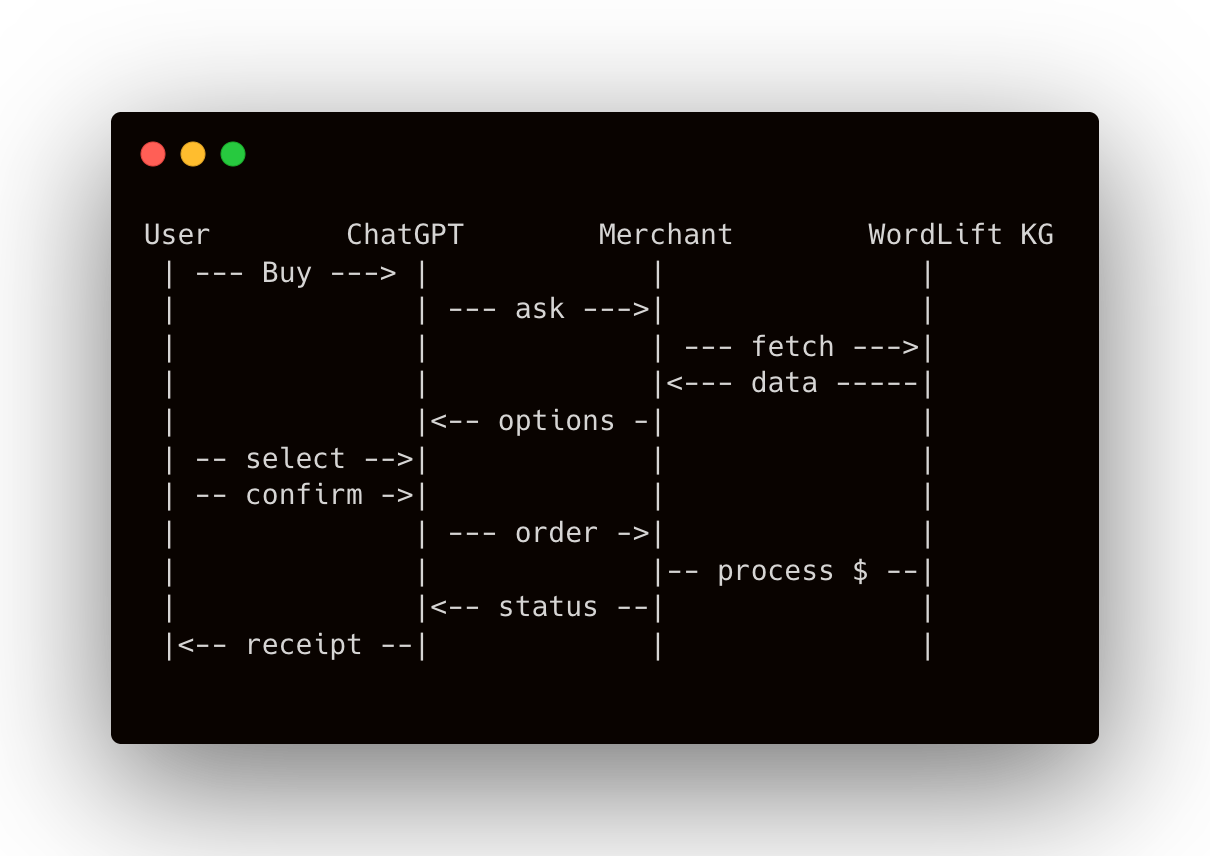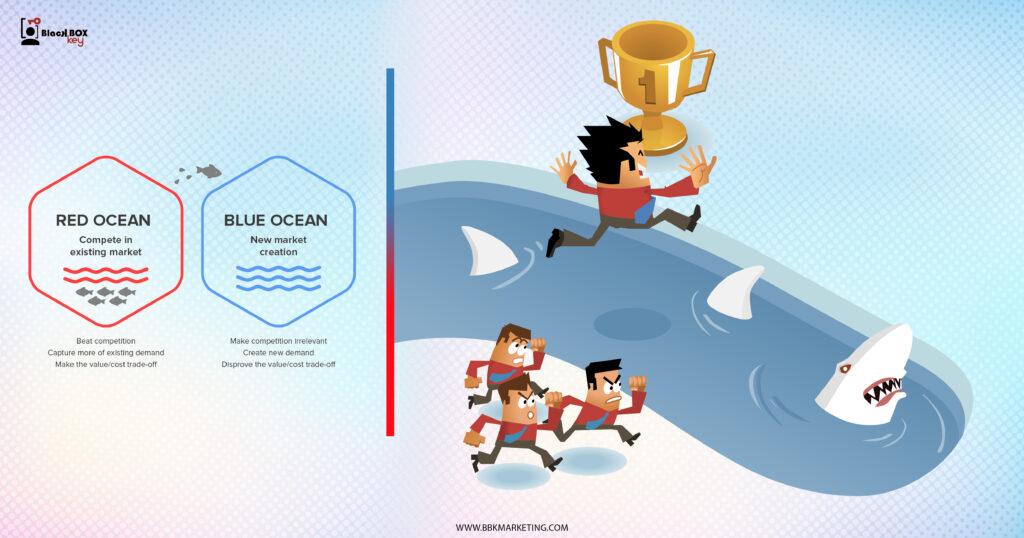Search has always loved structured data. For years we’ve shipped well-formed product catalogs to Google Merchant and tuned attributes to win in Shopping. That mental model still helps—but OpenAI’s new commerce feed is drastically evolving the game. We’re no longer optimizing static listings for a SERP; we’re supplying machine-readable context to an assistant that negotiates intent in real time.
Here’s how it’s different and how we’ll approach it with semantic data.
I spent a few hours tinkering and reviewing the specifications and reading a few of the early commentary. Here is my take:
1) From “listing” to “reasoning input.”
A Google Merchant feed describes a product so it can be ranked and priced in a comparison grid. An OpenAI feed becomes evidence the assistant uses while reasoning inside a conversation. Attributes aren’t merely filters; they’re facts the agent mentions, contrasts, and turns into answers.
2) From keywords to use-cases.
Google expects taxonomy + attributes. OpenAI benefits from use-case semantics: what the product is for, what it pairs with, who it fits, and under what constraints (budget, materials, delivery window, accessibility, sustainability). Think “compatible with iPhone 15 Pro,” “works for cold brew,” “fits 28–30″ waists,” “vegan leather,” “next-day in Milan.”
3) From click-through to task completion.
Shopping ads chase CTR and conversions off-site. Agentic commerce optimizes for problem resolution in-chat: shortlisting, trade-off explanations, bundle suggestions, and—if enabled—instant checkout. The quality bar shifts from glossy creatives to clean facts, variant logic, inventory freshness, and clear policies. Remember, ChatGPT controls its own memory of you.
4) From one PDP to many variants.
Assistants excel when they can reason across variants (size, color, region, price, fulfillment). That means embracing item_group_id + per-SKU offers, not flattening everything into the parent. Variant hygiene is no longer optional. GS1 Digital Link data is foundational for higher-quality, context-aware product interactions, delivering a distinctive experience across categories. And the magic doesn’t stop online, these experiences can flow naturally into local retail.
5) From periodic uploads to near-real-time truth.
Google tolerates slower cadences. Assistants need fresh stock, price, and delivery estimates to avoid hallucinations and broken promises. Treat availability and shipping as live signals, not static attributes.
id (SKU/offer), item_group_id for variants, plus GTIN/MPN when you have them. If you also enable Instant Checkout, plan for the server-side bits (checkout session endpoints, order notifications, payment token handling). It’s closer to an integration than a feed.
1) Model products are entities, not rows.
Our Knowledge Graph already expresses Product 
Offer 
Organization 
Place. We’ll map entities to feed records while preserving relationships the assistant can use (brand lineage, compatibility, accessories, store locations).
2) Promote use-case facts to first-class fields.
We’ll extract and normalize attributes that answer “Will this work for me, here, now?”—sizes (with systems), fit, allergens, power standards, region availability, and compatible devices. These become reason-ready snippets the agent can quote.
3) Treat variants as citizens.
Each variant gets its own entity with a shared item_group_id. Parent PDP stays canonical; variants carry offer-level price, stock, personalized description and media.
4) Keep the truth fresh.
We already join, in most cases, the KG with inventory/OMS and pricing to keep availability, inventory_quantity, and shipping promises current. Stale data erodes trust; assistants remember. This will become even more interesting when the local inventory as well are added to the mix.
5) Make policies explicit and linkable.
Clear, crawlable URLs for returns, privacy, and terms—plus seller name and contact—are mandatory for assistant-mediated trust and checkout eligibility.
6) Write like we’re talking to a colleague.
The assistant isn’t swayed by superlatives. We write descriptions, product highlights and details that are specific, comparable, and testable: materials, tolerances, standards, care, and limitations. All of this is done already at scale using our Content Generation tool.

Google Merchant rewards catalogs that rank. OpenAI rewards knowledge that helps—facts an assistant can rely on to guide someone to the right choice, confidently and quickly. That’s where structured data and graph thinking change the game.
With a Knowledge Graph as the source of truth, we don’t just list products—we model the domain and the language around it:
The combination is powerful: the entity graph tells the agent what is connected to what; the lexical graph supplies the exact words and evidence to answer follow-ups (“how to clean it,” “is it vegan,” “will it arrive by Friday in Milan?”). This is the difference between a shoppable catalog and an assistant-ready product memory.
Practically, we ship three things in the feed (and keep them fresh):
OpenAI (and any other AI Agent) then has everything it needs to explain trade-offs, propose bundles, and complete tasks—not just rank SKUs. With a semantic layer (a Product Knowledge Graph), you’re ready to ship not just products, but understanding.
Make your catalog agent-ready with WordLift B+. Start your Product Knowledge Graph today.
Think of ACP as a universal language that allows AI agents, merchants, and payment systems to communicate securely and efficiently. It’s an open standard designed for interoperability.
The core components include:
Yes. While ACP is blockchain-agnostic—meaning it does not require a specific ledger technology—it is fully compatible with them. Businesses can integrate blockchain where it adds distinct value, such as:
In essence, ACP can operate with traditional payment systems, blockchain-based ones, or a hybrid of the two.
As of late 2025, ACP is enabling a new wave of frictionless, AI-driven commerce. High-impact applications include:
ACP provides the standardized framework for communication and consent that AI agents need to act on a user’s unique preferences. It allows an agent to:
This eliminates the need for custom, one-off integrations for each merchant, allowing any agent to provide a personalized experience with any ACP-enabled business.
For businesses, adopting ACP offers a significant competitive advantage by making their products and services “agent-native.” Key benefits include:
Adopting any new protocol requires strategic planning. Key considerations include:
As of late 2025, ACP is in its initial commercial rollout phase. The protocol was introduced by OpenAI and Stripe with the launch of “Instant Checkout” in ChatGPT, featuring Etsy as the first live merchant partner and Shopify integration announced to follow.
While a global adoption percentage has not yet been published, the open-sourcing of the protocol is expected to accelerate adoption significantly across the e-commerce and payments ecosystem.
The key difference is that ACP is a protocol, not a platform.
It is designed for machine-to-machine communication, with an emphasis on consent tokens, agent intent, and machine-readable catalogs, rather than human-driven clicks.
ACP provides standardized, real-time signals about product availability, lead times, and fulfillment options. This allows intelligent agents to automate and optimize supply chain operations by:
When integrated with existing enterprise resource planning (ERP) systems, ACP can significantly improve supply chain efficiency and resilience.
As of 2025, regulators globally are actively developing frameworks for AI and commerce. Key areas for businesses to monitor include:
Implementers should prioritize building explicit user consent flows and maintaining robust, auditable records.
The ACP framework is built on core principles of data privacy and user control:
While the exact implementation depends on the vendors involved, the protocol’s design prioritizes user privacy.
ACP is poised to add significant value to industries characterized by complex purchases, repeat orders, or the need for dynamic discovery.
Early adopters are likely to be in:
In late September 2025, OpenAI, in partnership with Stripe, officially launched the Agentic Commerce Protocol (ACP). This launch coincided with the release of “Instant Checkout” inside ChatGPT, a feature that allows users to complete purchases conversationally.
The post OpenAI Product Feeds: From Catalogs to Conversations appeared first on WordLift Blog.



Stay in touch and up to date with your industry news… Always be a step ahead with BBK Services…
join newsletter now ⤵
